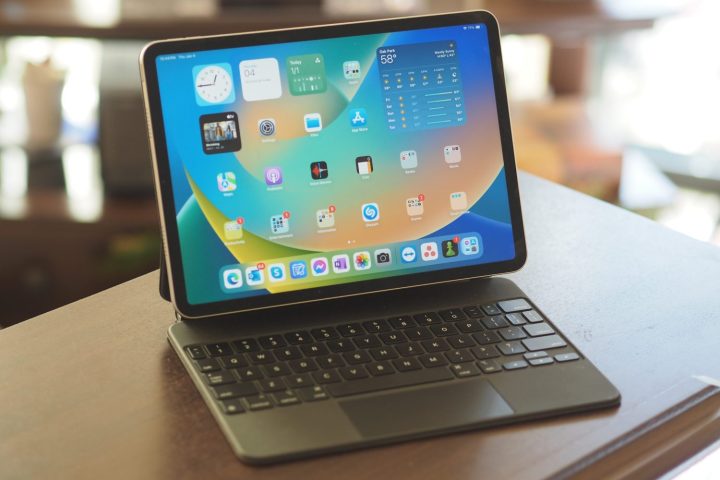
Some good news for iPad loyalists is here. The excruciating wait for the latest iteration of iPads will mercifully come to an end next month. Apple has scheduled an event for 7 a.m. PT on May 7 that will be livestreamed globally from the usual outlets, including the company’s dedicated events page and YouTube channel.
All four iPad trims are expected to embrace the new M3 silicon, a chip that is already flexing its muscles in a few computing machines such as the MacBook Air. However, the real bombshell lands in the iPad Air territory, which has, until now, remained steadfast in its single-size offering. Reliable sources like Bloomberg’s Mark Gurman are predicting that Apple plans to serve up a larger 12.9-inch version of its mid-tier tablet in 2024.

On the premium end of the spectrum, whispers suggest that the iPad Pro models are in for an OLED display upgrade, a chnage that has been years in the making. Yet, whether this lavish treatment will grace both the large-screen and small-screen variants remains a mystery. There is certainly a precedent to tread cautiously here.
While the 12.9-inch iPad Pro flaunts a mini-LED screen with improved color saturation and contrast, its smaller counterpart remains tethered to an LCD panel with the ProMotion tech serving as a consolation. As for design tweaks, speculation remains sketchy here. Are we getting the mythical iPad Pro upgrade that adds a glass rear panel to facilitate wireless charging? Well, that sounds appealing but doesn’t seem likely to be happening with the 2024 generation.
What seems certain is the arrival of new keyboard accessories, aka the Magic Keyboard that will reportedly make the whole iPad assembly look more like one of Apple’s sleek laptops. But amid all this hardware hubbub, let’s not overlook the software realm and the promising potential of the new M3 silicon in handling AI tasks.

Rumor has it that Apple is delving deep into this domain, even mulling over a Gemini Nano licensing deal with Google. With Apple already confirmedthe M3 silicon’s prowess in running language models and Stable Diffusion-driven image creation locally, so there is a bit of hope here.
I recently wrote about the on-device AI processing approach that Apple is eyeing, and it could very well make its way to iPads, especially via pro-centric multimedia and creative apps that are now increasingly leaning into generative AI tricks.
Apple’s own research papers offer a glimpse into the company’s vision for AI integration into its software stack. Is there a price hike hiding somewhere in the plus of upgrade cards? Well, the rumor mill is silent about it so far, but we won’t be surprised if that’s the case given Apple’s history.



